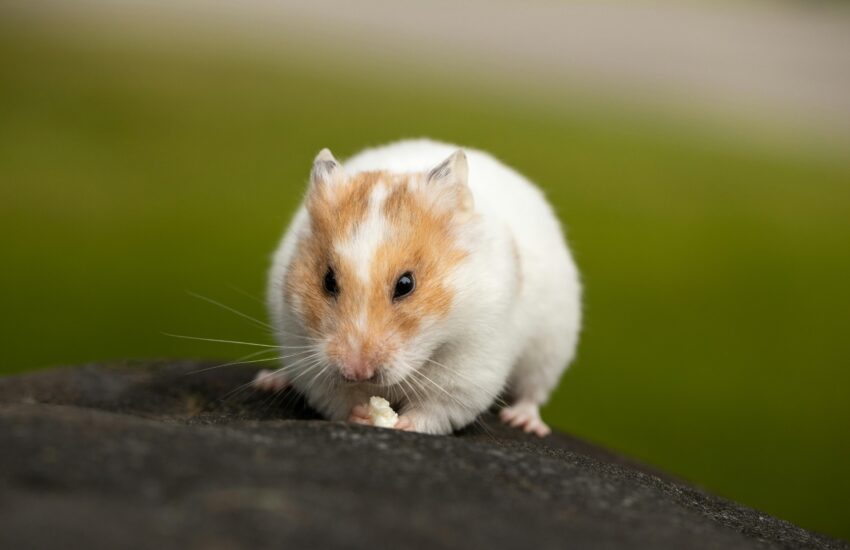Hamster Diet Secrets
Understanding Hamster Nutritional Needs
When it comes to hamster care, their diet is crucial for optimal health. Hamsters are omnivores, which means they require a balanced diet comprising both plant and animal-based foods. To ensure you meet their nutritional needs, it’s vital to understand what makes up a healthy hamster diet. A typical hamster diet should include a high-quality commercial hamster food, which is specially formulated to provide all necessary nutrients, minerals, and vitamins. Look for options that contain whole grains, seeds, and pellets for a balanced approach. Additionally, you can supplement this diet with fresh fruits, vegetables, and small amounts of protein such as boiled eggs or lean cooked chicken.

Key Components of a Hamster Diet
A well-rounded hamster diet consists of several key components. Firstly, **pellet food** serves as the foundation of their nutrition. It contains essential vitamins and minerals tailored for hamsters. Secondly, fresh fruits and vegetables contribute to hydration and provide vital nutrients. Offer small amounts of carrots, apples, and broccoli, but remember to avoid citrus fruits. Finally, protein sources enhance their diet; consider offering mealworms, boiled eggs, or yogurt drops for added calcium. Limiting sugary or fatty treats is also essential to prevent obesity and health issues in your pet.
The Role of Fiber in Hamster Diets
Fiber plays a critical role in maintaining a hamster’s digestive health. It helps prevent gastrointestinal issues and promotes a healthy gut. Hamsters naturally seek out **hay** in the wild, so including small amounts of timothy hay or oat hay in their enclosure is beneficial. Hay not only provides fiber but also encourages natural chewing behavior, which is important for their dental health. Ensure that any hay provided is free of mold and contaminants. Providing a mix of ingredients in their diet will help maintain their overall well-being.
Common Foods Hamsters Love
Many hamster owners wonder what foods are safe and enjoyable for their furry friends. Beyond the standard pellet food, certain treats can enhance their diet and keep them happy. Offering a variety of foods keeps mealtime interesting and stimulates their natural foraging behavior. Just remember to introduce new foods gradually to avoid tummy troubles. Furthermore, explore safe options like **sunflower seeds**, **pumpkin seeds**, or **dried fruits** as occasional treats. It’s essential to maintain moderation to prevent excess weight gain and other health concerns.
Safe Fruits and Vegetables for Hamsters
Fruits and vegetables add valuable nutrition and hydration to your hamster’s diet. However, not all produce is safe. Sticking to safe options like **carrots**, **spinach**, and **blueberries** can make a delightful addition. Remember to wash them thoroughly and cut them into tiny pieces to prevent choking. Modest portions of fruits are ideal due to their sugar content; a small slice of apple or a couple of blueberries is perfect. Avoid starchy vegetables like potatoes as they can be harmful to your hamster’s health.

Protein Sources for Hamsters
Incorporating protein into your hamster’s diet is crucial for growth and energy. Besides standard commercial food, proteins can come from various sources. For instance, **mealworms** are an excellent protein source that hamsters typically enjoy. They can be fed dry or live, depending on your preference. Another great option is finely chopped boiled eggs — about a quarter of an egg per week is sufficient. Be cautious with any protein-rich food that contains added salt or preservatives. Always aim for fresh, unprocessed options to ensure quality nutrition.
Hydration: The Overlooked Element
While solid food forms the food base, **hydration** is equally crucial for your hamster’s health. Hamsters typically drink from a water bottle, which should be kept clean and filled with fresh water daily. It’s essential to provide access to clean water, as dehydration can lead to serious health issues. If uncertain whether your hamster is drinking enough, monitor its urinary output or check if it shows signs of excessive drinking. A small dish of water may work better for some hamsters, as they can enjoy splashing or soaking.
Signs of a Healthy Hamster Diet
A healthy diet reflects on your hamster’s overall appearance and behavior. A well-fed hamster will be active, lively, and will show a healthy coat. You should also observe their feces, which should be firm and regular. If you notice changes in eating habits or weight fluctuations, it’s crucial to re-evaluate their diet. Additionally, watch for signs of allergies such as itching or hair loss. Maintaining a diary of their eating habits can help you identify food-related health issues quickly.
Transitioning to a New Diet
Transitioning your hamster to a new food regimen requires patience and a gradual approach. To avoid digestive distress, introduce the new food incrementally over a week. Start by mixing a small amount of the new food with their current diet, slowly increasing the new food’s proportion. Observing your hamster’s reaction is critical; look for any signs of discomfort or refusal to eat. Making dietary changes too quickly can upset their stomach, so always prioritize their comfort during this process.
Key Takeaways
- Hamsters need a balanced diet that includes high-quality pellets, fresh produce, and protein.
- Fiber is essential for digestion; hay is a great source.
- Hydration is critical; fresh water should always be available.
- Monitor your hamster’s health and dietary habits for quick identification of issues.
- Transition to new foods gradually to avoid digestive problems.
FAQ
1. What is the best hamster food to buy?
The best hamster food includes a high-quality commercial pellet mix designed for hamsters. Look for brands that contain whole grains, seeds, and essential vitamins. Additionally, supplement with fresh veggies and small protein sources like mealworms for a balanced diet.
2. Can hamsters eat fruits every day?
Fruits should be offered in moderation, about 2-3 times a week. Although they contain valuable nutrients, fruits are high in sugar, which can be unhealthy if fed too frequently. Stick to safe options like apples or blueberries for occasional treats.
3. How can I tell if my hamster is dehydrated?
Signs of dehydration in hamsters may include lethargy, dry skin, or a decrease in urine output. Ensure that fresh water is always available for your hamster. If you suspect dehydration, consult a vet immediately.
4. What vegetables should I avoid feeding my hamster?
Avoid starchy vegetables like potatoes, corn, and anything that contains high sugar levels or preservatives. Instead, focus on safe options such as carrots, cucumber, and leafy greens.
5. How important is protein in a hamster’s diet?
Protein is crucial for a hamster’s growth and energy levels. Include a protein source like mealworms or boiled eggs in their diet about once or twice a week. Too much protein, however, can be harmful, so moderation is key.
